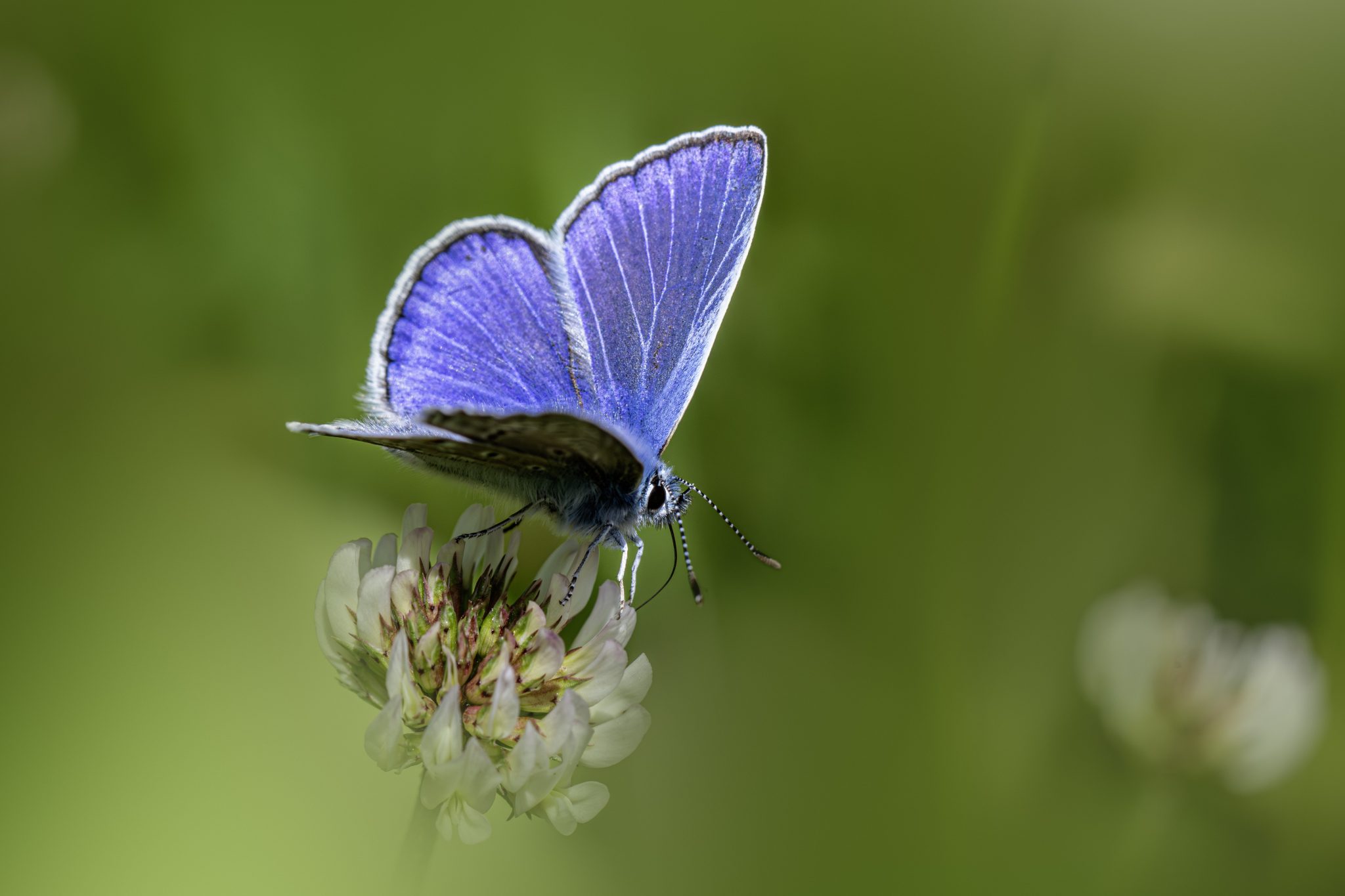The Common Blue (Polyommatus icarus) is a small, widespread butterfly belonging to the family Lycaenidae. It is one of the most common and easily recognizable blue butterflies in Europe. Here’s an overview of the Common Blue:
Appearance:
- Size: The wingspan ranges from 28 to 36 millimeters.
- Coloration:
- Males: The upper sides of the wings are a bright blue with a thin black border and a white fringe.
- Females: The upper sides are brown with a variable amount of blue near the body and a series of orange spots along the edge of the wings.
- Undersides: Both sexes have greyish-brown undersides with numerous small black spots circled in white and a series of orange spots along the margins of the hindwings.
Habitat:
- Preferred Habitats: The Common Blue thrives in a variety of habitats, including grasslands, meadows, gardens, roadsides, and coastal dunes. It prefers areas with an abundance of leguminous plants, which serve as host plants for its larvae.
- Geographic Range: The species is found throughout Europe, North Africa, and temperate Asia. It is widespread and often abundant in suitable habitats.
Behavior:
- Feeding: Adults feed on nectar from various flowering plants, including clover, buttercups, and knapweed. The larvae feed on the leaves and flowers of leguminous plants, particularly common bird’s-foot-trefoil (Lotus corniculatus) and other trefoils.
- Activity: They are diurnal and most active during warm, sunny days. Males can often be seen patrolling low over the ground in search of females.
- Flight: The flight period extends from April to October, depending on the climate and location. There are usually two or three generations per year.
Life Cycle:
- Eggs: Females lay eggs singly on the leaves and flower buds of host plants.
- Larvae: The caterpillars are green with a dark dorsal stripe and are well-camouflaged against the host plant. They are often tended by ants, which provide protection in exchange for sweet secretions from the larvae.
- Pupae: Pupation occurs on the ground or among the vegetation. The pupae are brown and blend in with their surroundings.
- Adults: Adults emerge after a few weeks of pupation and are ready to mate and continue the life cycle.
Ecological Role:
- Pollination: As nectar feeders, adult Common Blues contribute to the pollination of a variety of wildflowers.
- Ant Mutualism: The larvae’s relationship with ants is a notable aspect of their ecology, benefiting both the butterflies and the ants.
- Food Web: Both larvae and adults are important prey for various predators, including birds, spiders, and other insects.
Conservation Status:
- Population: The Common Blue is currently not considered threatened and is one of the most widespread and abundant butterflies in its range.
- Threats: Habitat loss, agricultural intensification, and the use of pesticides can locally impact populations. Conservation efforts focus on preserving and restoring suitable habitats.
Interesting Facts:
- Color Variations: The extent of blue on the upper sides of the female’s wings can vary significantly between individuals and populations.
- Ant Associations: The mutualistic relationship between the larvae and ants is fascinating and enhances the larvae’s survival.
- Adaptability: The Common Blue’s ability to thrive in a wide range of habitats contributes to its widespread distribution and success.
Identification Tips:
- Blue Males: Look for the bright blue upper wings of males, especially in sunny, grassy areas.
- Underside Patterns: The greyish-brown undersides with black and orange spots are distinctive and help in identifying both sexes.
- Habitat Preference: Observing them in a variety of habitats, including grasslands and gardens, can aid in accurate identification.
In summary, the Common Blue (Polyommatus icarus) is a charming and widespread butterfly with distinctive blue and brown coloration, interesting ecological interactions with ants, and a presence in diverse habitats. Its adaptability and abundance make it a familiar and beloved species among butterfly enthusiasts and conservationists alike.
Visited 3 times, 3 visit(s) today
Views: 75
Subscribe to the newsletter:
